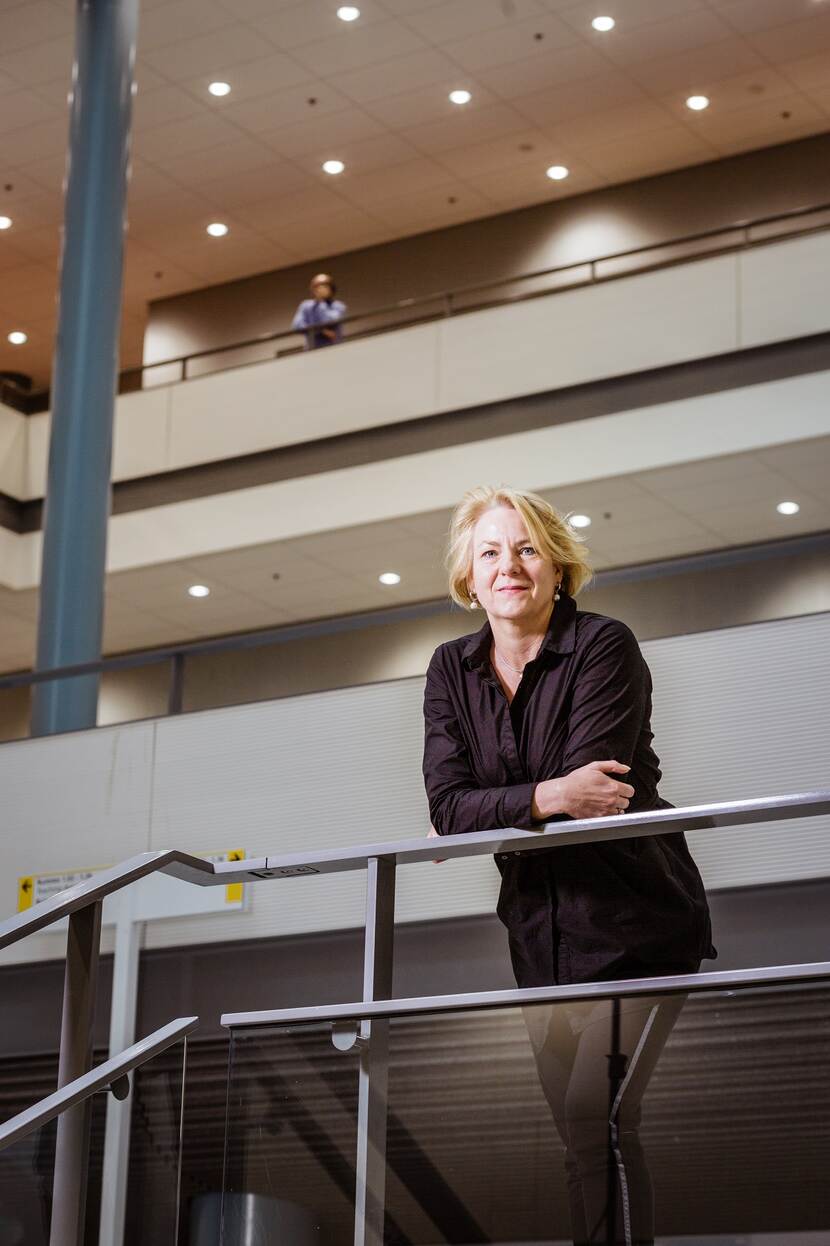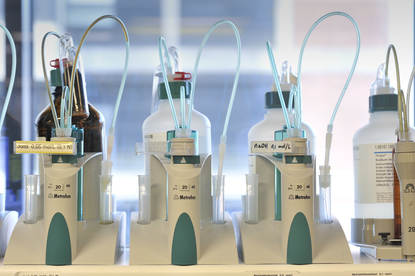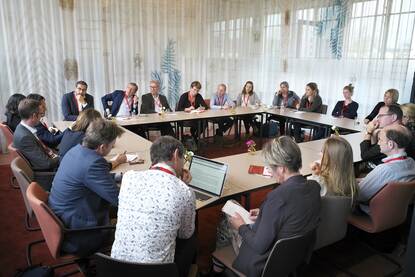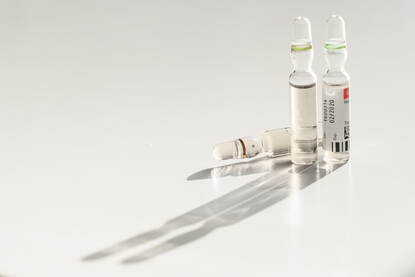Animal testing has been practiced for decades, due to a lack of better alternatives in terms of predictive value. However, both in vitro and in silico models are quickly gaining ground. “When attempting to identify the best model, we should always base our choices on predictiveness”, argues professor Roos Masereeuw (Utrecht University).
Roos Masereeuw is Professor of Experimental Pharmacology at the Utrecht Institute for Pharmaceutical Sciences. Her research group focuses on developing models for regenerative therapies. The group has developed a concept for a biological artificial kidney, consisting of functional units – human proximal tubule epithelial cells – fixed on a synthetic membrane. “We can also use this system to study the excretion of substances, like drugs. Coupling information from the kidney system to in silico modelling helps us to understand the renal excretion processes in healthy individuals, as compared to patients with kidney failure”, professor Masereeuw explains.
Predictiveness
Predictiveness is key for professor Masereeuw and her group. “With regard to physiologically based pharmacokinetic modelling, I think in vitro models have tremendous potential in translating effects from models to humans. These models can have great predictive power, and there is a constant stream of new models that provide even better data. We’re only at the start of this journey. The key, in my view, is to select the right model to answer the right questions. The more complex the system, the harder to replace, so we cannot dispense with animal studies just yet, unfortunately.”
Simpler when possible
One single model that tries to predict the complete system just isn’t always the solution. “It’s all about the complexity of simplicity”, Roos Masereeuw continues. “We need to use simpler models whenever possible, rather than making things unnecessarily complicated. Take the kidney for example. Studies that focus on the excretion of certain substances or metabolites from the body, won’t require a more complex system. This has been verified using our own model. However, in the case of more complex processes, such as the immune response, it’s an entirely different matter. Different pathways and organs will interact. In cases like this, I would be inclined to break down the research question into more manageable pieces and then to seek suitable models for these sub-questions.”
Many in vitro models are currently available. These range from very simple to extremely complex, such as multi-organ-on-a-chip models. “These vary from single function to high throughput screening models. That inevitably compels us to make choices and to compromise. High throughput options are probably very well suited for screening studies aimed at identifying specific interactions or toxicological effects. However, these methods are not always suitable for predicting the behaviour of substances in more complex systems, such as multiple interacting cell layers. The bottomline is to consider how you might select or adapt your model to suit your own particular research question, and not the other way around. Whatever the case, never lose heart.”
Making a transition
Organs-on-a-chip have been a hot topic for over ten years now. “These are unquestionably promising developments. Sadly, as is all too often the case in academic research, a PhD student will start a project and develop a promising model, but once they have handed in their thesis, the model is simply shelved. Any further development of these models is hampered by a lack of funding, little interest in implementation, or limited knowledge of validation. Within our group we realised that, and since our work is supported by governmental funding, we felt we were obliged to make a transition and try to push ahead with this type of research.”
"Every step counts. If we keep in mind that predictiveness is key, we’re moving in the right direction"
U-AIM
That decision led to the establishment of the Utrecht Advanced In Vitro Models (U-AIM) hub, a joint initiative by Utrecht University, UMC Utrecht and HU University of Applied Sciences. The hub is coordinated by professor Masereeuw and professor Jos Malda (UMC Utrecht and UU Faculty of Veterinary Medicine). ‘We aim to become a leading centre for the development of in vitro models, disease models and models for compound screening and toxicity testing. Moreover, we want to explore the potential of multidisciplinary collaboration as a way of expanding beyond the academic world, into validation and transfer, and to engage with industry and regulators.”
Roos Masereeuw mentions the Cystic Fibrosis organoid model, which was developed by professor Jeffrey Beekman at UMC Utrecht. “That model is now being actively used in screening and has already led to the successful treatment of patients. A success story that clearly demonstrates the potential of these models. In an effort to emulate that success, the U-AIM is currently making itself known to a wider public by means of ‘road shows’, public events and conferences. We are trying to raise our public profile and to make more people aware of our portfolio. This will help us showcase the models we are working on right now, and to highlight the successes we have achieved.”
All stakeholders have a part to play in the acceptance of in vitro modelling, Professor Masereeuw continues. “We are keen to engage with the industry, to get our models incorporated in their latest compound- or toxicological screening protocols. But regulatory bodies have a part to play as well. Good In Vitro Method Practices (GIVIMP) are a great start to begin with. But there’s a real need for guidance concerning the ways in which in vitro data should be processed and incorporated into registration files.”
Changing mindset
Education is another strong focus point for the U-AIM. “Education on in vitro modelling is essential. We have summer school programs ongoing to teach the researchers of today and tomorrow. We have to achieve a change of mindset in research and help scientists to look beyond the beaten tracks. We want to trigger people to look for the best models. Traditional use of animal testing is not necessarily the best way to go. We stimulate scholars to perform systematic reviews, for example. That will not only be a fine addition to a PhD thesis, it will also help in finding the best model for your problem. And we do see a trend evolving in that area, since more and more animal experimental committees proactively ask for these reviews.”
Are animals human enough?
The traditional rat model does not always guarantee the best predictivity. This is reflected by a recent article by Roos Masereeuw’s group in Drug Discovery Today with the almost philosophical title of ‘Humans are animals, but are animals human enough?’ (Jansen, K., Pou Casellas, C., et al., Drug Discovery Today 2020). “We systematically reviewed the renal clearance of twenty different active pharmaceutical substances in several of the animal species that are routinely used to predict human pharmacokinetics. The results showed good predictive power for most animal models, except in case of the rat, where calculations resulted in systematic overestimations. This shows that automatically selecting the most commonly used in vivo model might not always give the best prediction!”
Technological innovation is one thing, but changing mindsets is quite another, Roos Masereeuw concludes. “Yes, we definitely need to reduce animal testing, for ethical considerations. But equally important is the improved predictiveness of in vitro models. Research on in vitro models hardly ever started to replace animal testing, but to find better experimental models. If we can use materials of human origin in an in vitro environment, we may be able to produce better models.”
“And no, in vitro is not cheaper than in vivo testing. Not in the short run anyway. However, I can imagine that better models in the early stages of clinical (or pre-clinical) development might deliver better results, leading to fewer failures in the clinical stages of development. So indirectly that might yield financial benefits on the long run.”
Education instead of obligation
“We must never lose sight of the fact that no model is - or ever will be - perfect. Instead we should always try to find the model that is best suited for the question at hand. I can fully understand why people might have their reservations about this, and why their views might be a little conservative. That is why a 'bottom up' transition is needed: education will work better than compulsion.” In this context, Roos Masereeuw is unwilling to make any predictions about reductions in animal testing. “Every step counts. But if we keep in mind that predictiveness is key, then we’re moving in the right direction.”







